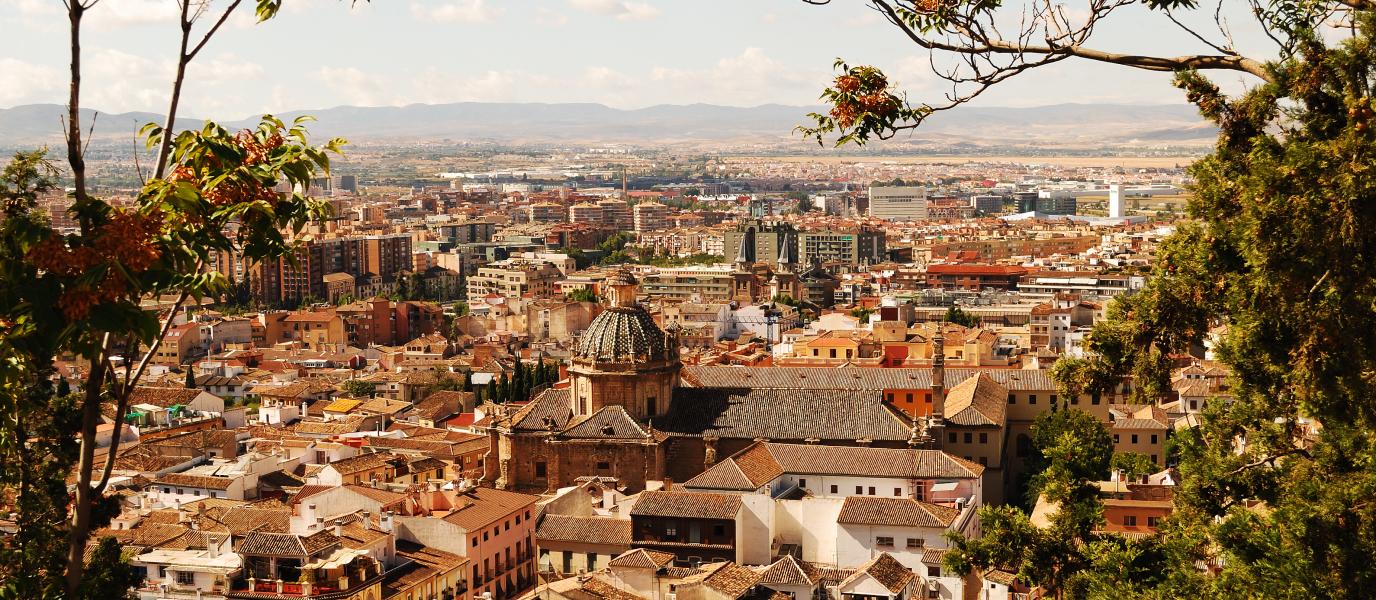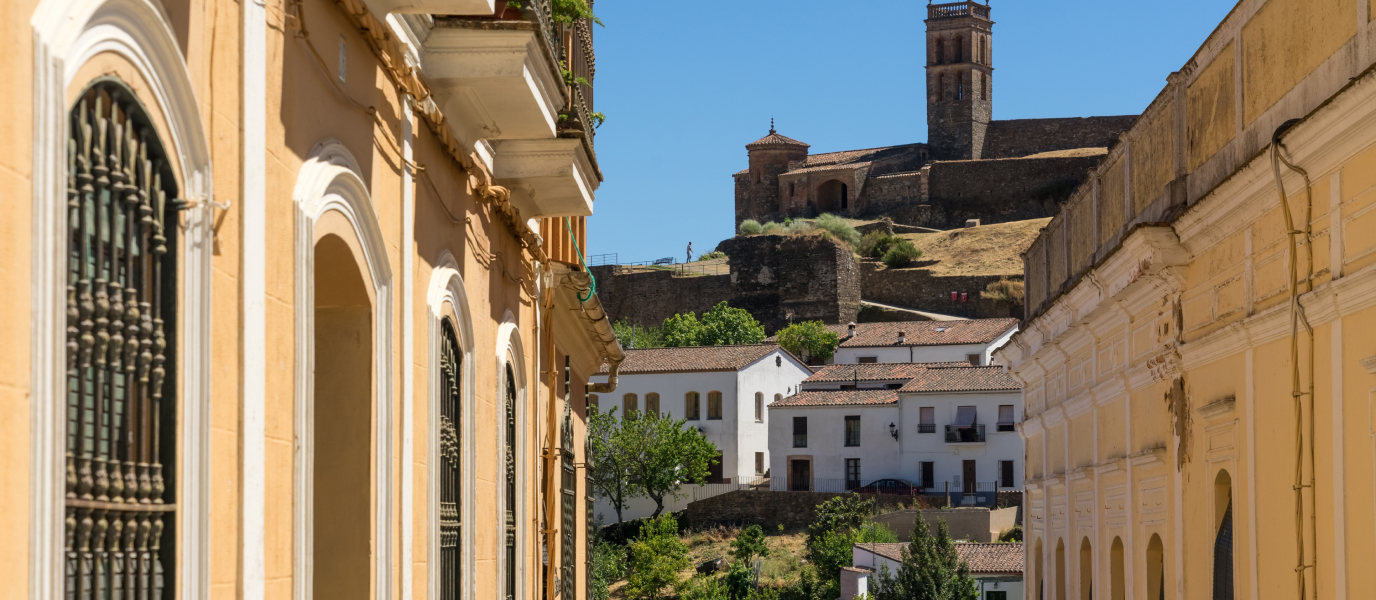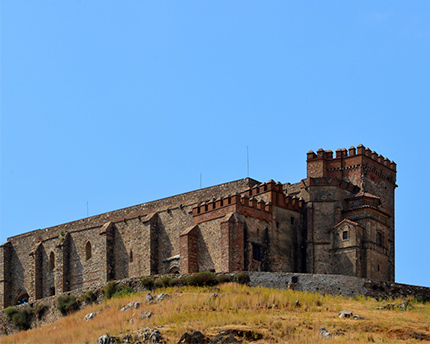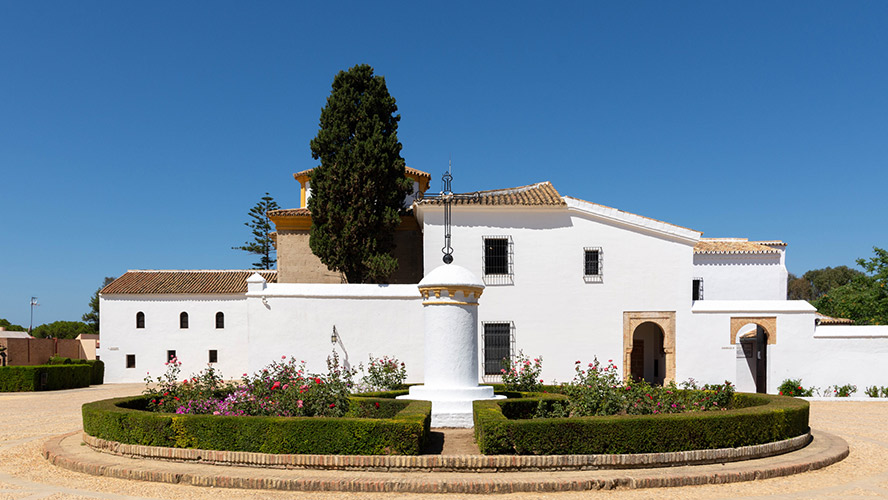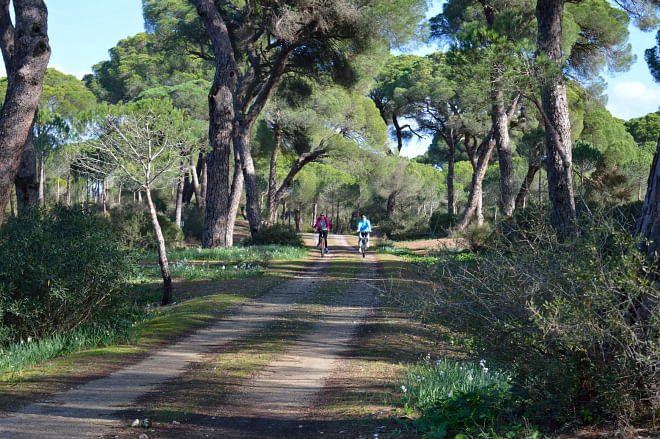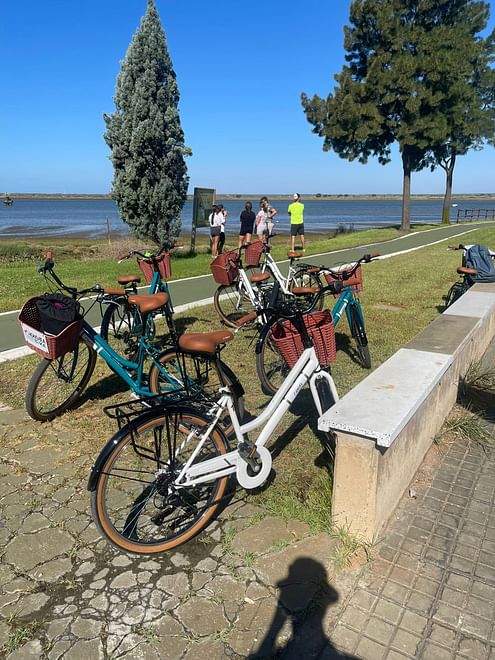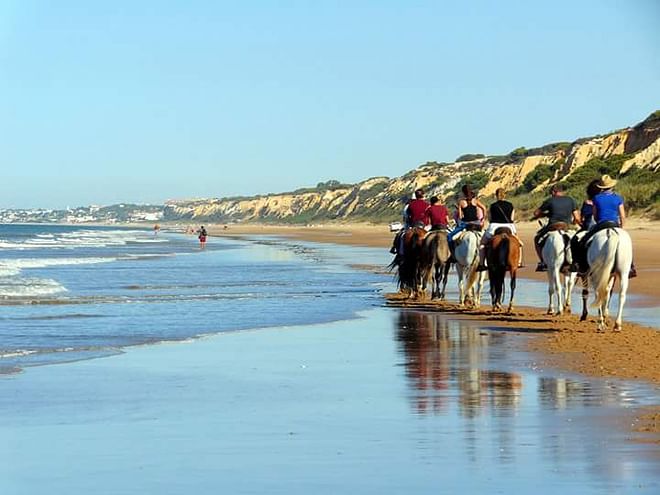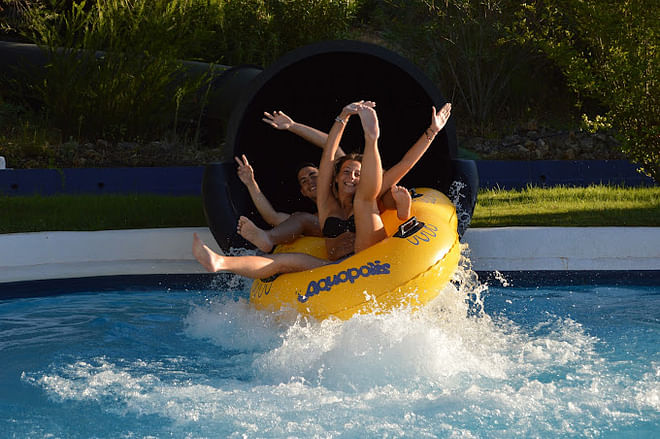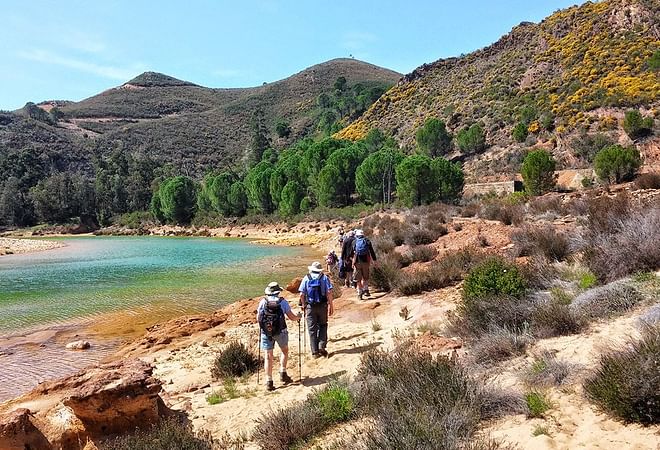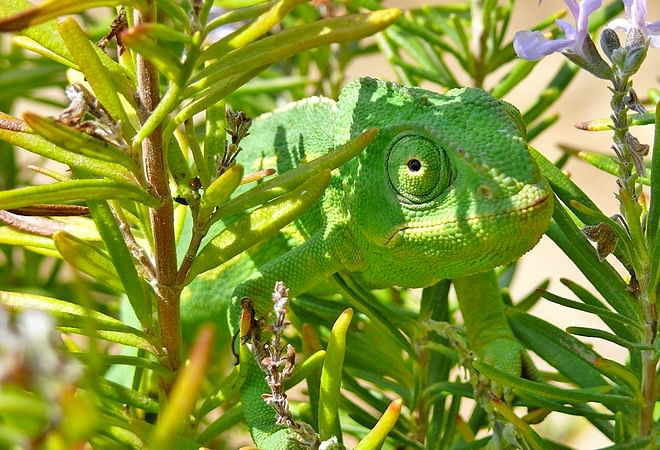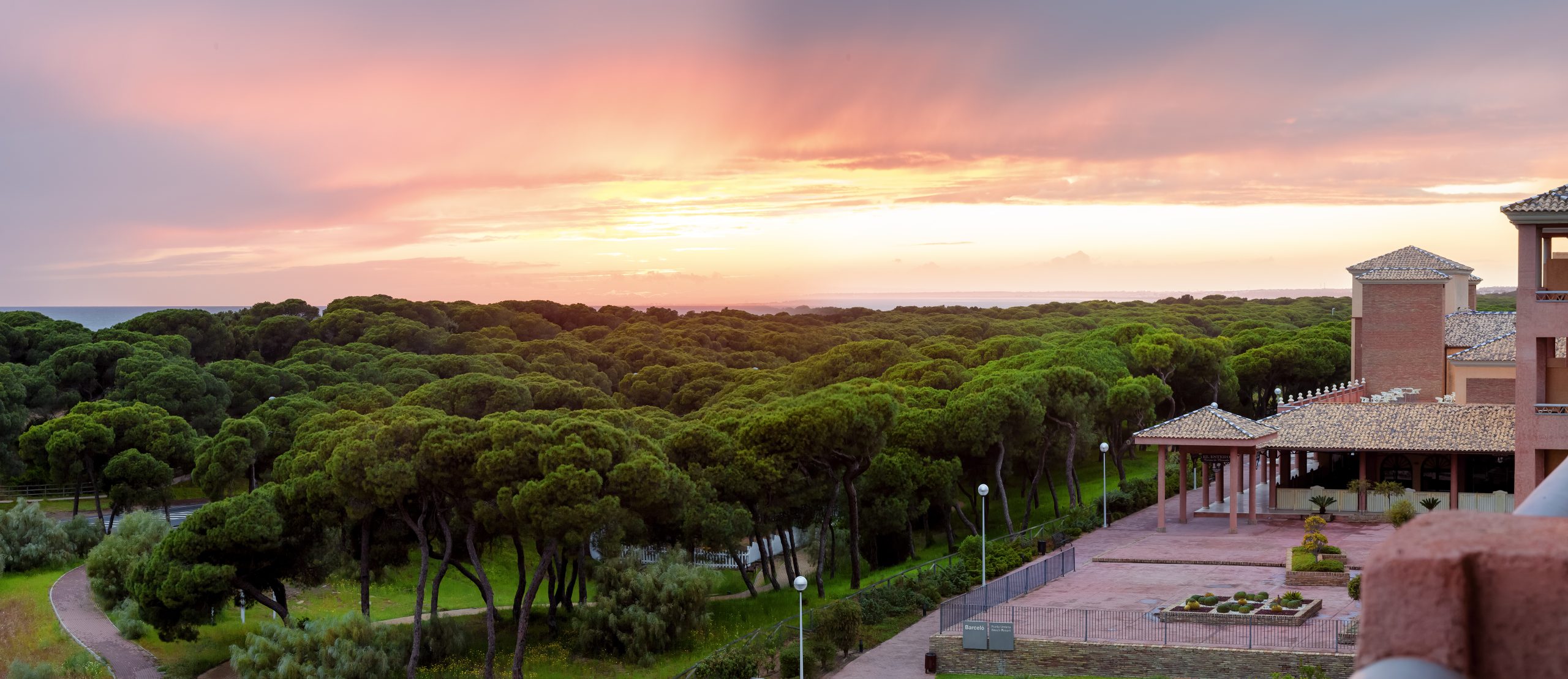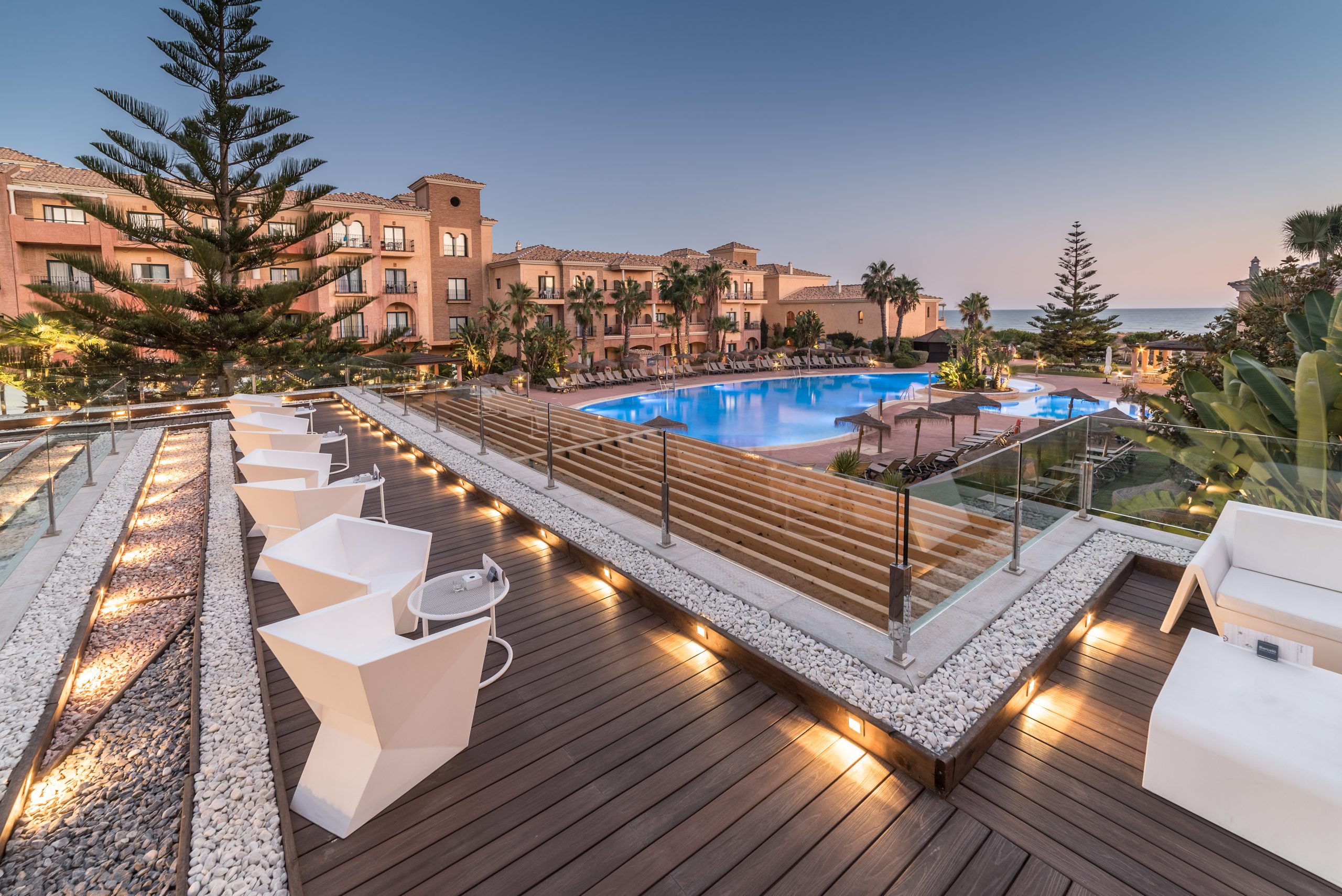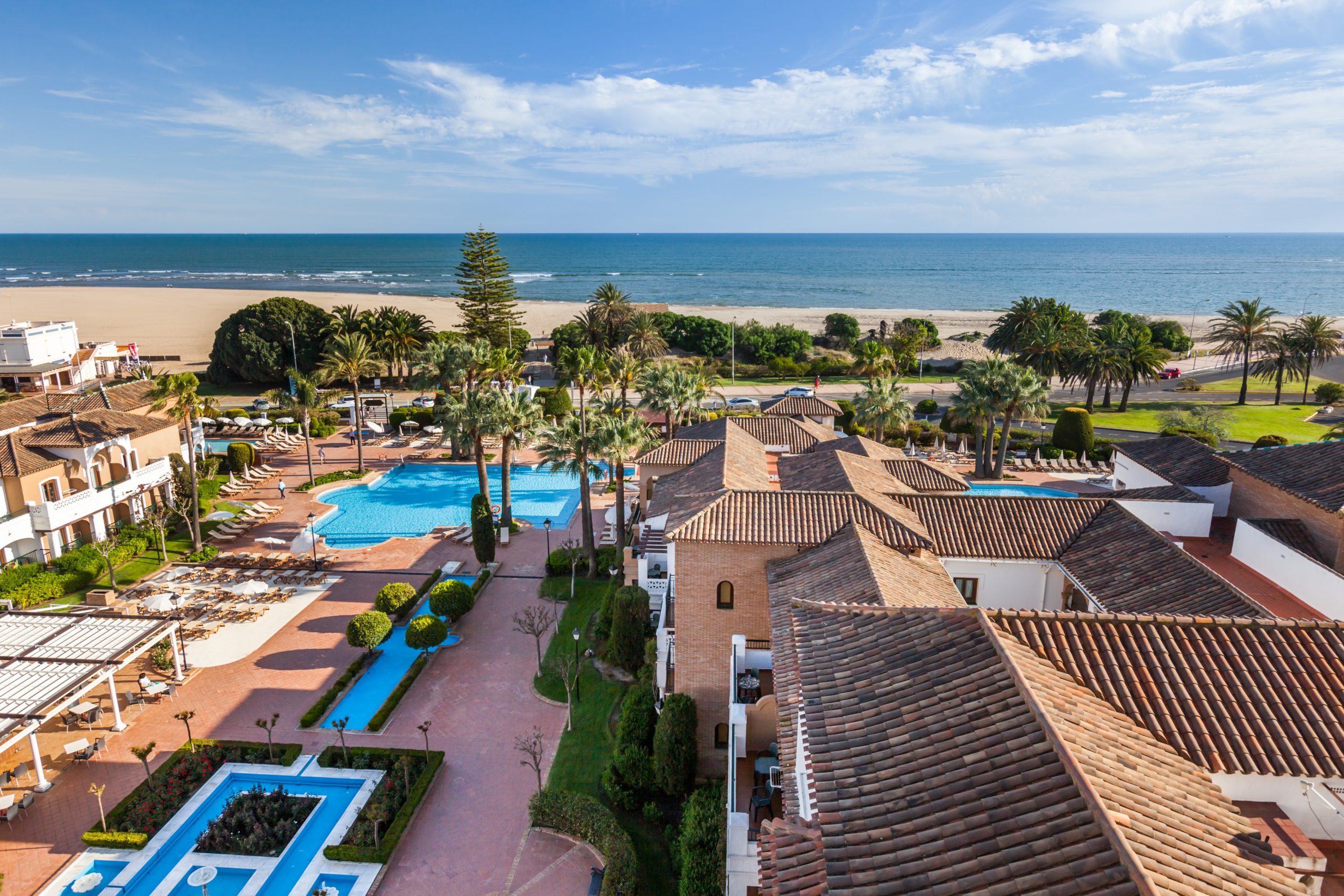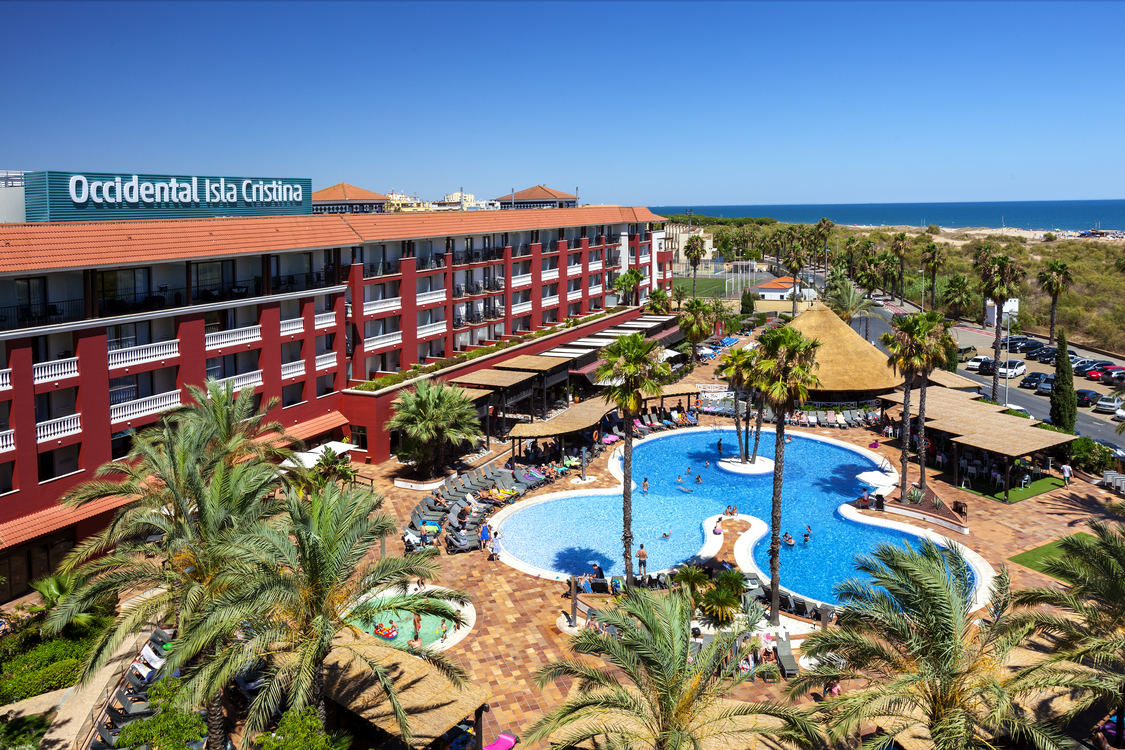The city of Huelva is teeming with history, culture and art. It played a crucial role in the discovery of America – some of Columbus’ ships were built here, and many of the crew and captains that sailed them hailed from these parts. The nearby towns of Moguer and Palos de la Frontera bore witness to Christopher Columbus’ preparations, and in fact his voyage to the New World set sail from the latter. To top it all, Huelva has been influenced throughout time by the Phoenicians, the Greeks and the Romans and therefore has an immensely valuable heritage.
Huelva is waiting to be discovered. We give you our pick of the best places to visit in this Andalusian city.
Things to do in Huelva
If you’re not sure where to start, let us give you a few pointers.
Plaza de las Monjas and Huelva Town Hall
At the heart of Huelva, the pedestrianised streets of the old town connect at Plaza de las Monjas. The plaza boasts several important buildings, including the Convento de las Agustinas and the Palacio de los Duques de Medina Sidonia. The nearby Town Hall building has a pretty facade with columns and two striking towers topped with sharp slate spires.
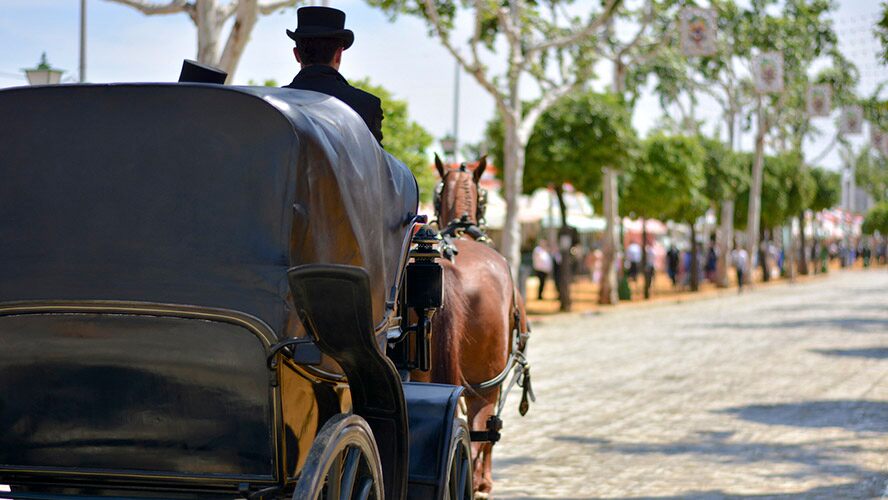
Catedral de la Merced
A visit to the Catedral de la Merced, or Huelva Cathedral, is non-negotiable. The cathedral is actually made up of a former convent and church, lending it a somewhat different aspect to what you’d typically expect. Dating back to the 17th century, this part-colonial, part-Baroque building houses several altarpieces and sculptures from the 18th century.
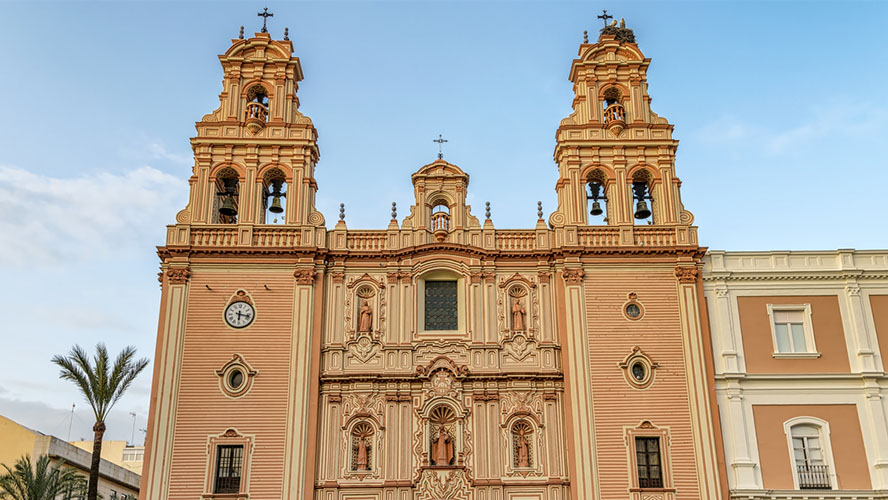
Monuments: Virgen del Rocío and Fe Descubridora
If there’s one thing that Huelva is known for internationally, it’s the Virgen del Rocío (also called the White Dove). The hermitage housing the sculpture of this incarnation of the Virgin Mary is in neighbouring Almonte. However, Huelva has a fascinating bronze monument in her honour, representing the annual parade of the sculpture outside her sacred building.
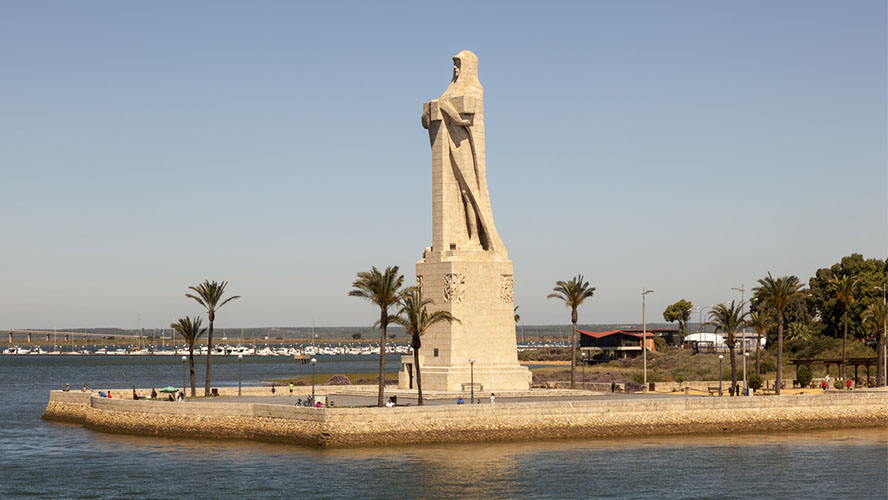
Huelva has another famous monument: the Monumento a la Fe Descubridora, or Monument to Columbus. You’ll find it on the outskirts, in the area called Punta del Sebo. It rises 37 metres tall and depicts Columbus and a cross, atop a plinth with bas-reliefs representing the Aztecs, Incas, Mayans and Christians. From here, you’ll get some beautiful views of the intersection between the Tinto and Odiel rivers.
Mining heritage: Muelle del Tinto and Barrio Inglés
The Muelle del Tinto on the River Odiel is a Cultural Interest Resource under the Spanish heritage registry. It was a mineral loading platform during the 19th century and is one of the most recognisable places in the city. It has since fallen into disuse but now attracts tourists keen to admire this impressive wood and iron structure. A walk in this part of town is a journey though part of Huelva’s long history. The mining firm called the Río Tinto Company established a settlement that was primarily inhabited by their British workers, leading to the nickname the Barrio Inglés, or English District. They brought with them many customs from their home turf, creating the first golf course in Spain and one of the first tennis courts.
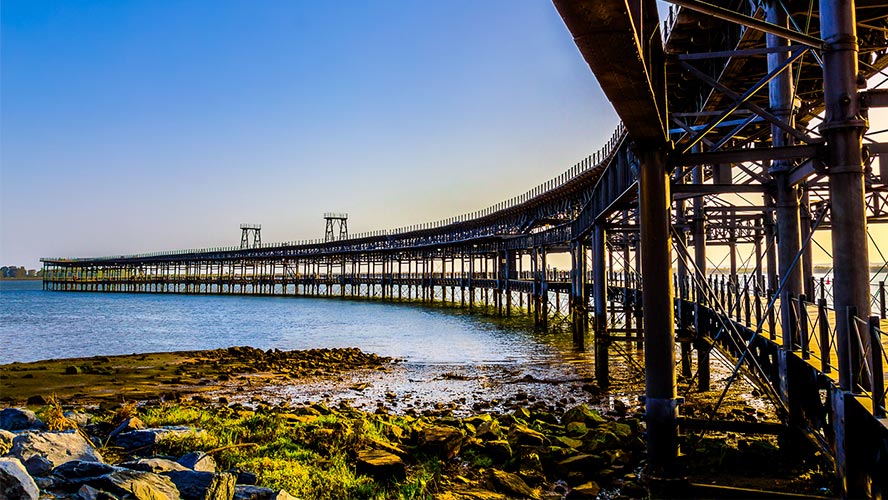
Tapas in Huelva
Everyone needs a break from the tourist trail from time to time, and there’s no better way to rest and recharge your batteries than by enjoying some great local food. The province has some great produce and dishes to sample and if you opt for tapas you can taste a bit of everything.
Try the exquisite jamón de Jabugo (Jabugo ham) or the delicious gambas de Huelva (Huelva prawns), famous for their characteristic colour and taste. Other delicacies include patatas con choco (potatoes with cuttlefish) and coquinas de Huelva al ajillo (Huelva wedge clams with garlic).
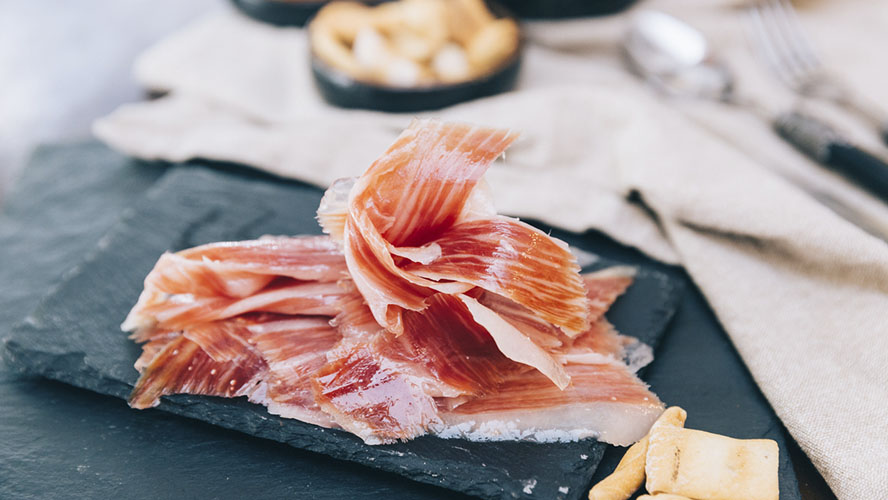
As for specific restaurants, we can recommend D’Altura (Avenida Martín Alonso Pinzón, 8), Angarillas (Calle de la Palma, 4) and El Portichuelo (Calle de Vázquez López, 15).
Once you’ve had your fill, it’s time to digest and take a stroll through the city’s parks and gardens. Parque Moret with its 72 hectares is one of the largest in Andalusia. The Jardines del Muelle were built in 1935 in front of the port, making them the oldest park in Huelva.
What to see around Huelva
If you’re willing to venture beyond the capital there are plenty of other places worth a look.
Palos de la Frontera
Columbus set sail from Palos de la Frontera on his voyage to the Indies, and the town today has a suite of locations which together constitute an Artistic Heritage Site. Visit the 14th-century Monasterio de la Rábida, where Columbus stayed while planning his first crossing of the Atlantic, as well as the Casa Museo de los Pinzón, the Fontanilla and the Iglesia de San Jorge. Columbus’ ship the Pinta was built here, and many of his crew were recruited here by Martín Alonso Pinzón
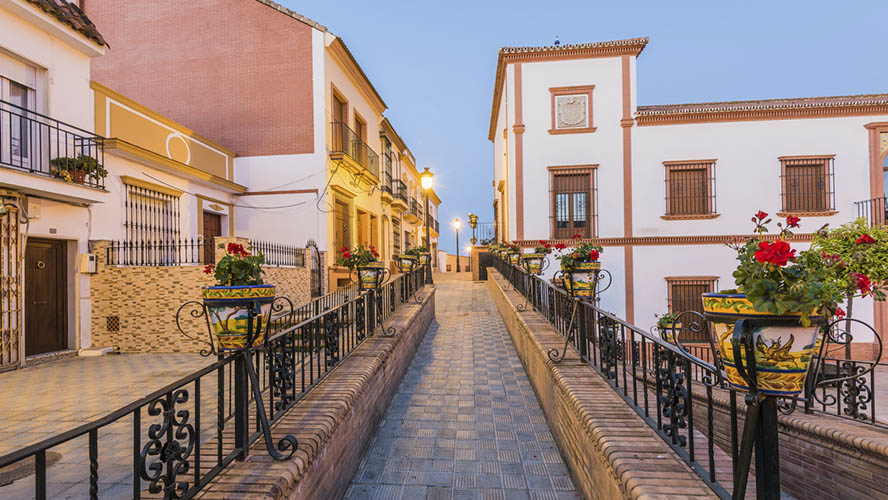
Moguer
This is another of Huelva’s lugares colombinos (‘Columbian places’) and a Cultural Interest Resource on account of the town’s role in preparations for Columbus’ voyage. Here, the explorer was helped by the abbess of the Monasterio de Santa Clara and by the Niño brothers, who provided him with the ship bearing their name. Moguer was also the birthplace of Juan Ramón Jiménez, the poet and winner of the Nobel Prize in Literature. Stop in at the Casa Museo de Zenobia y Juan Ramón Jiménez to learn about the town’s tribute to his most famous work, Platero y yo (Platero and I).
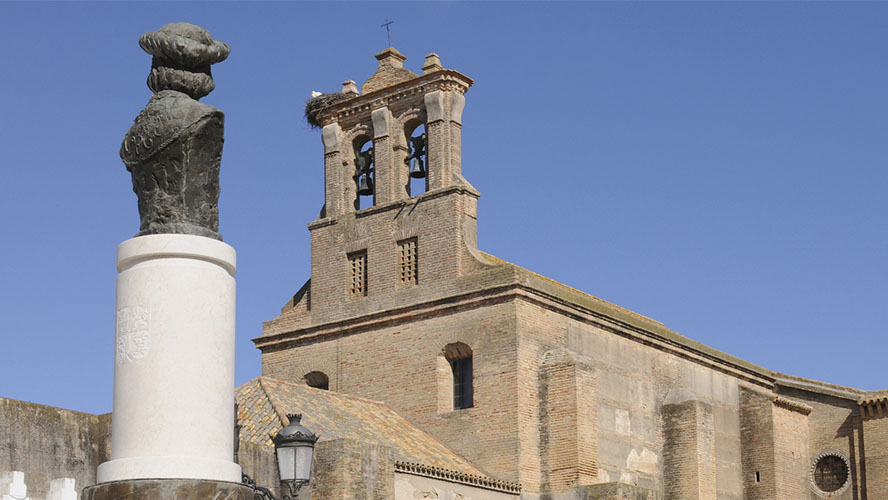
Odiel Wetlands
At the mouth of the Tinto and Odiel rivers is one of the most impressive natural areas in all of the province: the Odiel Marshes. It’s a UNESCO Biosphere Reserve and a special protection area for birds. The meeting of fresh and salt water has created an unusual richness of biodiversity amid a variety of landscapes. The Batán and Taraje lagoons, Playa del Espigón, the Almendral Forest and the Isla de Enmedio are just some of the features that make this place so beautiful.
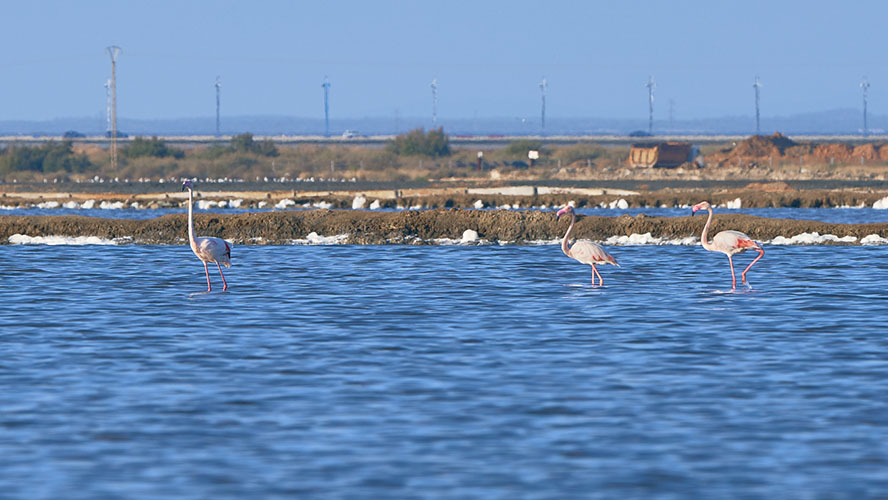
Punta Umbría
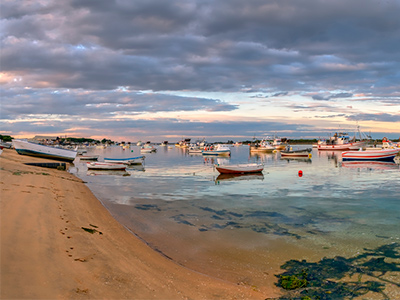
When it comes to beaches, Huelva has a coastline of endless fine white sands. One of the most famous beaches is Playa de Punta Umbría, right on the Costa de la Luz where the confluence of the Tinto and Odiel rivers creates the famous Huelva Estuary. The seafaring town of Punta Umbría is surrounded by sea and idyllic beaches. Other charming spots are Playa de los Enebrales, Playa de la Bota and Punta de la Canaleta. At sunset, take a stroll along the street called the Calle Ancha and soak up the local atmosphere in one of its terrace bars.





























































